#muslin
Text

Extremely rare woman's tie in muslin embroidered with blue flowers and branches. Shaped with Ariadne's thread covered with sky blue silk. Identical choker closed by a hook.
1832-1833
3K notes
·
View notes
Text

Embroidered muslin dress, France, 1805-10
From the Victoria & Albert Museum
#regency#dress#muslin#embroidery#french#1805#1810#1810s#1800s#19th century#fashion#fashion history#history
219 notes
·
View notes
Text
Uploaded on 1 January, 2024 by [@]ahmedeldin and [@]hiddenpalestine on Instagram
"An ex-Israeli soldier describes the IDF’s strategy of targeting residences of innocent Palestinians, entering them, and subjecting occupants to harassment. This tactic aimed to instill fear and deny innocent Palestinians a sense of security on their own land, inside their own homes.
Another soldier who is [@]breakingthesilenceisrael shares the horrific reality of his past, reflecting his inhumane treatment of Palestinians and his complete domination over them.
#BreakTheSilence#humanrights#ceasefirenow"
------------------------------------------------------------------------------
[id: The video captions read as follows (grammar/punctuation done by me):
[This stays on the screen the entire video] Former Israeli soldiers explain how the IDF acted without any limits, selecting homes belonging to innocent Palestinians, invade them, and harass its inhabitants
1st soldier: Every house in the West Bank actually has a number. Each and every house has a number. So, we would open up the maps and look at the specific house that looked into the right place that we had to enter – (a) city centre or a road – and after we would verify that the house has the best parameters, windows, and geographical area, we made sure the people in the house were innocent. So, you – we – we would enter a house of (an) innocent Palestinian home in the middle of the night.
But I would say that what motivated me eventually to break my silence – was the piercing eyes of the young Palestinians when I was barging into their house in the middle of the night. I could always justify it to myself, but those eyes, the anger, their fear, was what eventually helped me overcome that. The house of a physician in Nablus for example, that I entered in the middle of the night, taking him, his wife, and his daughter, and pushing them in the (a) room – If they wanted to use their bathroom, or their kitchen, or use their phone, they need permission from me. That specific house in Nablus stayed with me for a while because that physician himself was kind enough and generous enough to sit down and explain to me what it means to be a Palestinian. And I thought that I was a good moral soldier, that I was actually helping entrench the occupation in that sense.
[For the second clip, this stays on the screen for the entire time, too] ex-Israel soldier explains what is happening
So this (these) Jewish settlers that live in Havaan are living under the same rights that I live in, in Jerusalem, but the Palestinians next to them, next house over – next building over, sometimes next apartment over – lives under my rule, my military rule. And I can do whatever I want with him: I can take his home as a temporary base for a few hours, to a few days, to a few weeks. I can decide that I’m arresting the people of the house and tying him up to the fence of my base.
If you will get an order to demolish their home, or just lock their front door and don’t let them out into the street – their house is on a street that only Jews (Jewish) settlers can walk on, and Palestinian cannot – so they have to walk through windows to (through) yards into the other side, into the casbah of Lebanon. I think realizing all of that in a very, very early stage in my service help (helped) me undertood that someone was lying to me along the way. I didn’t feel like I’m protecting anyone, I didn’t feel like I’m helping anyone feeling more safe. I feel like I’m terrorizing people, I feel like for the first time in my life, the boundaries between good and bad that I learned as a kid – and obviously I know that I’m on the good side – was broken. I felt like I am the terrorist and my job was literally to scare people so they cannot think about acting against Israeli settlers, or the Israeli military. That was actually our defined mission. /id]
#palestine#gaza#israel#ex soldier#zionism#muslin#arabic#middle east#instagram#free palestine#free gaza#ceasefire now
191 notes
·
View notes
Text
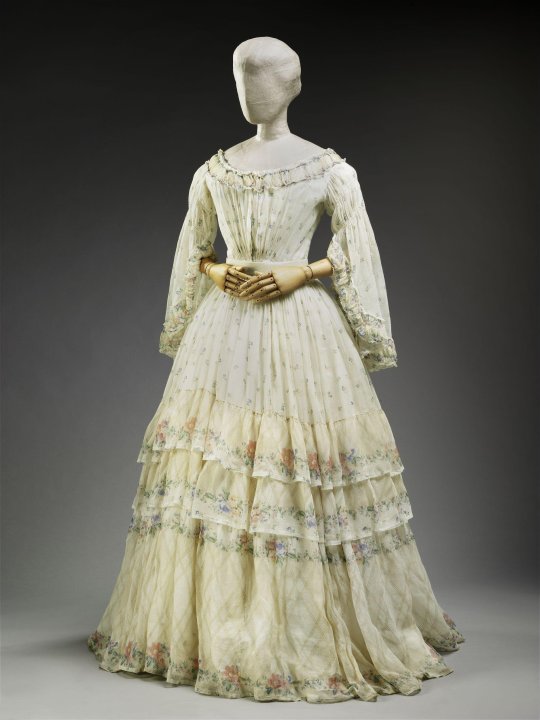
Muslin, that diaphanous cotton of India, is steeped in a bleak history of colonialism, Imperialism, and human atrocity. That's a way to start a Monday, isn't it? But that's the thing about fashion history.
Looking at a gown like this, which dates from the late 1840s, it's easy to get lost in the beauty: the pattern, the layers, the absolute Romantic gorgeousness.
It is, undoubtedly, a work of art, making use of that thin, breathable fabric, with delicate ruching, a genius use of pattern, and a shape that's reminiscent of the 18th century.
The demand for muslin fabric was immense, bolstered by the impact of the British East India Company, beginning in the 18th century. The finest muslins were from the Dhaka region and 2000 thread count *made by hand*. Starting with Marie Antoinette and her famous chemise a la reine, the craze for muslin among the elites of Europe came at a devastating cost--eventually contributing to the loss of the art and the death of millions of people in the regions.
Because once Europeans figured out how to manufacture muslin on their own (as they did with silk, paisley, pashminas, etc) they stopped all trade with India.
And of course, the great irony is that Europeans didn't just take the art and design, but directly appropriated patterns, styles, and more. There's a reason "question beauty relentlessly" is the Thread Talk motto. Lots more info on the subject over at my blog.
© Victoria and Albert Museum, London
#threadtalk#historical costuming#silk dress#textiles#fashion history#costume#costume history#history of fashion#muslin#textiles of india
574 notes
·
View notes
Text
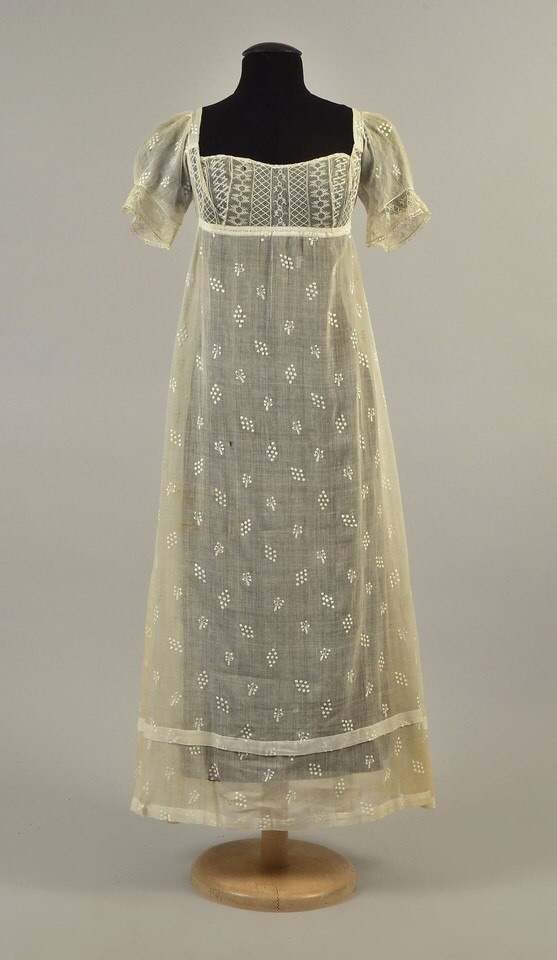




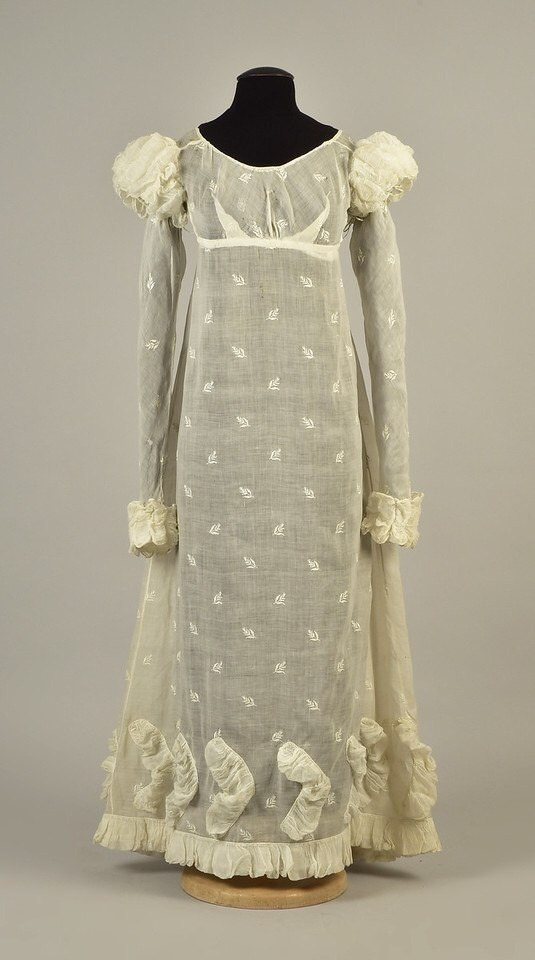
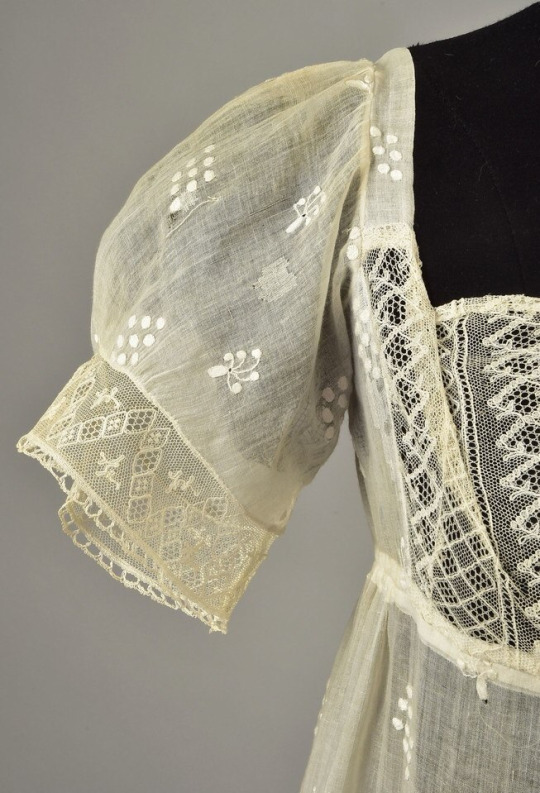
𝙻𝚘𝚟𝚎 🤍
𝚃𝚠𝚘 𝚖𝚞𝚜𝚕𝚒𝚗 𝚍𝚛𝚎𝚜𝚜𝚎𝚜 𝚍𝚎𝚌𝚘𝚛𝚊𝚝𝚎𝚍 𝚠𝚒𝚝𝚑 𝚎𝚖𝚋𝚛𝚘𝚒𝚍𝚎𝚛𝚢, 1808 𝚊𝚗𝚍 1815
#fashion #fashiongram #fashionable #fashionphotography #fashionlover #fashionart #fashionaddict #fashionphotographer #fashionpost #fashionshoot #fashionlove #fashionlovers #fashioneditoral #editoral #catwalk @bixlasagna
𝙵𝚊𝚋𝚕𝚎𝚜 & 𝙵𝚊𝚒𝚛𝚢𝚝𝚊𝚕𝚎𝚜 - 𝙳𝚎𝚗𝚒𝚣 𝙺𝚞𝚛𝚝𝚎𝚕 𝚁𝚎𝚖𝚒𝚡 𝚋𝚢 𝙽/𝚊, 𝚁𝚘𝚜𝚒𝚗𝚊 ✨

#l o v e#hand made#nostalgia#take me there for one day#muslim#muslin#dresses#3/2024#feminism#magick#muslin dresses#embroidery#1808#19th century#vintage#vintage fashion#art history#orient#oriental#1815#aesthetic#x-heesy#now playing#music and art#vintage dress#chic#fashion#we Need magick#arabic
118 notes
·
View notes
Text

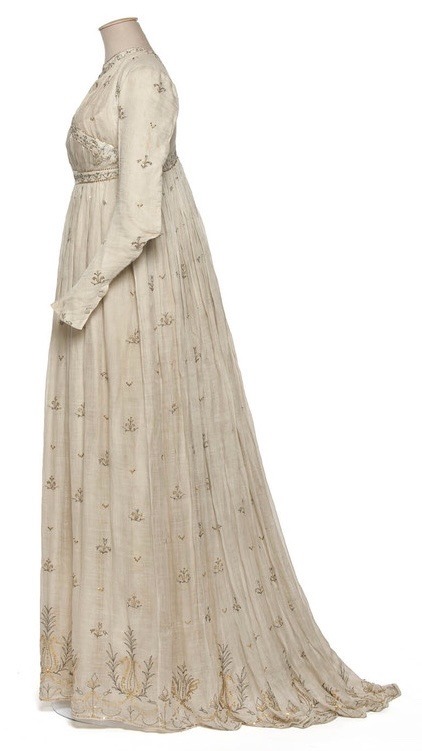

Cream Muslim Dress, ca. 1798, French.
Musée des Arts Décoratifs Paris.
#muslin#cotton#extant garments#womenswear#dress#18th century#1798#1790s#mad paris#musée des arts décoratifs paris#1790s dress#1790s france#diss#french revolution#1790s extant garment#directoire
283 notes
·
View notes
Text




#muslin#black community#original photographers#black people#graphic design#black art#artwork#black power#black culture#black family#black history#black africans#black woman#black is black#black women#black tumblr#black success
29 notes
·
View notes
Text
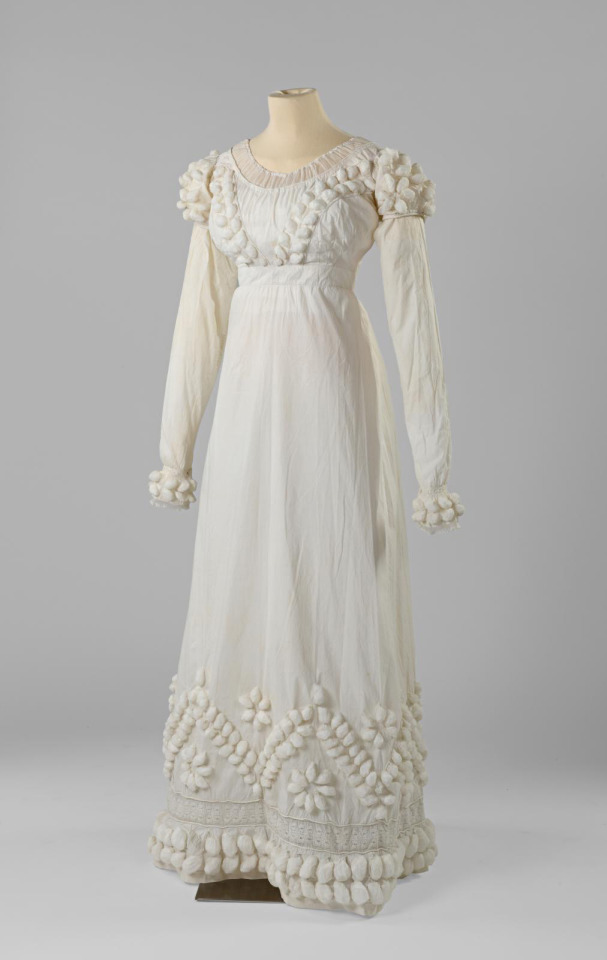
Neoclassical dress, First French Empire, Napoleonic era, c. 1810, white cotton and muslin. (La Gazette Drouot)
#dress#neoclassical dress#empire#empire style#fashion#cotton#muslin#empire waistline#first empire#first French empire#napoleonic era#19th century#1800s#1800s fashion#French#France#French fashion#fashion history#historical fashion#history of fashion#neoclassical#neoclassicism#costume#regency#regency fashion#Jane Austen#napoleonic
192 notes
·
View notes
Text
For people like me there is only Allah to love, talk to or erm share everything.
Love is Allah. Allah is love . But I'm not saying that you should not love anyone but I'm talking about if you don't have anyone to love you. Allah will always be there for you
#quranandsunnah#quranquotes#islamislove#islam help#islamic#islam#islamdaily#al quran#convert to islam#islamicpost#deenislam#deenoverdunya#muslimah#muslim revert#muslim#muslin#akhirah
20 notes
·
View notes
Photo

La Mode illustrée, no. 6, 8 février 1874, Paris. Toilettes de Mme Bréant-Castel, rue du 4 Septembre, 19. Ville de Paris / Bibliothèque
Description de toilettes:
Robe de dessous en faye lilas, Jupon de mousseline blanche, garni par devant d'un volant plissé, puis disposé au-dessus du volant jusqu'à la taille en trois grands bouillonnés, séparés par une guirlande de feuilles de pommier. Manteau de cour, en même mousseline, garni d'une haute dentelle; au-dessus de celle-ci, un large ruban lilas, sur lequel sont jetées des touffes de feuilles de pommier. Corsage décolleté. En guise de basques, de grandes coques en ruban lilas, avec branches de fleurs de pommier. Mêmes fleurs sur les épaules.
Robe de satin vert paon. Jupon en tulle de même teinte, bouillonné en lignes diagonales. Tunique en même tulle noir; à droite, trois nœuds immenses, en satin et velours, avec boucle dorée au centre. Corsage décolleté avec berthe et basques à créneaux, bordés d'un câble d'or. Nœuds et boucles dorés sur chaque manche courte.
—
Underdress in lilac faye, Petticoat in white muslin, trimmed in front with a pleated flounce, then arranged above the flounce up to the waist in three large swirls, separated by a garland of apple leaves. Court coat, in the same muslin, trimmed with high lace; above this, a wide lilac ribbon, over which are thrown tufts of apple leaves. Low-cut bodice. As basques, large shells in lilac ribbon, with branches of apple blossoms. Same flowers on the shoulders.
Peacock green satin dress. Tulle petticoat of the same shade, bubbled in diagonal lines. Tunic in the same black tulle; on the right, three huge knots, in satin and velvet, with a golden loop in the center. Low-cut bodice with berthe and crenellated basques, edged with a gold cable. Golden bows and buckles on each short sleeve.
#La Mode illustrée#19th century#1800s#1870s#1874#periodical#fashion#fashion plate#color#retouch#description#Forney#dress#toilette#ensemble#petticoat#Bréant-Castel#muslin#lilac#faye#court#green#satin#flowers#bows#evening#gown#crenellations#tulle#berthe
186 notes
·
View notes
Photo

Summer Dress
1864-1873
United Kingdom
Victoria & Albert
#dress#fashion history#historical fashion#1860s#1870s#victorian#19th century#summer dress#crinoline era#victorian fashion#white#green#cotton#muslin#united kingdom#v and a#v and a museum
966 notes
·
View notes
Text
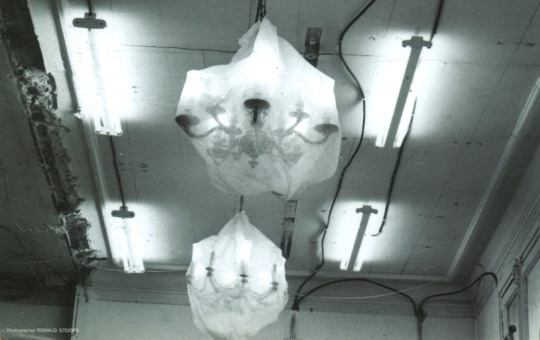
Maison Martin Margiela spring/summer 1991
531 notes
·
View notes
Text
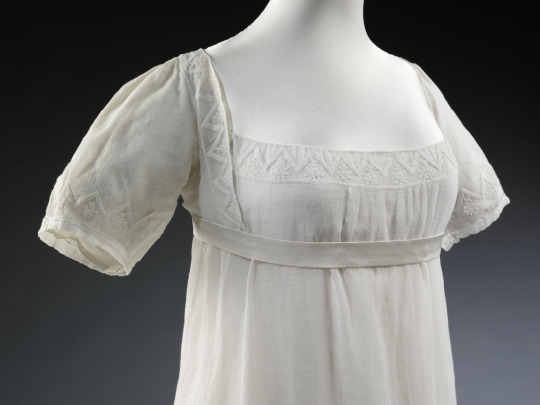



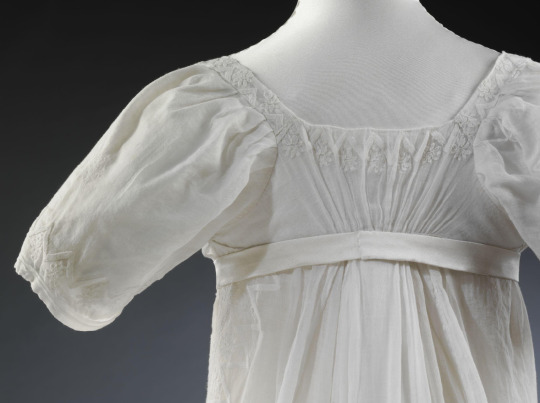
White muslin wedding dress with whitework embroidery, ca. 1807
From the Victoria & Albert Museum
#wedding dress#wedding#dress#fashion#fashion history#muslin#regency#georgian#1807#1800s#19th century#embroidery
70 notes
·
View notes
Text
ISLAM 101: Spirituality in Islam: Part 224
Knowledge
Knowledge (‘ilm) means information obtained through the human senses or through the Revelations or inspiration of God. It is also used to denote information that is in agreement with facts or realities, and to denote understanding something with its real, whole meaning and content. In addition, we come across usage of this term in the simple sense of thinking, under-standing, comprehension, and conclusions drawn as a result of such mental processes. Sometimes the word knowledge can even mean familiarity.
Although it is well known which aspect of the term knowledge in Islamic Sufism is most relevant in the context of this book, we deem it useful to mention some secondary matters, such as the different types of knowledge and its sources.
Knowledge, first of all, is dealt with in two categories: knowledge without means or knowledge that is had without being acquired, and knowledge that is acquired through some means.
Every living being has its own peculiar characteristics and potentials. These characteristics and potentials are the sources of certain, innate knowledge, knowledge a creature has without having to acquire it. (The modern scientific term for this kind of knowledge is instinct.) A human being’s being able to sense and perceive a lack of air, thirst, hunger, grief and joy, etc., a baby’s knowledge of how to nurse, a bird’s knowledge of how to fly and build nests, a fish’s knowledge of how to swim, young animals’ knowledge of how to avoid dangers, in short, these types of knowledge, knowledge of how to deal with the necessities of life, fall into the category of knowledge without means.
Knowledge acquired through the internal and external senses is included in the second category. Knowledge concern-ing the physical world is usually obtained through the five external senses–sight, hearing, smell, taste, and touch–while knowledge about the metaphysical or incorporeal realm of existence is acquired through internal senses–the mind and heart with their faculties of thought, reason, spiritual discovery and experience, intuition, etc.
As for the sources of knowledge or means of acquiring it, these consist of three, according to Islam:
The five external senses, provided they are sound.
True reports, of which there are two kinds: reports unanimously given by a group of truthful people of such a number that it is inconceivable that they have agreed to lie, and reports given by the Messengers of God, whom He has sent with special messages.
The third source of knowledge is reason. Axiomatic knowledge and the knowledge reached by using the mental faculties are included in this kind of knowledge.
Knowledge is also divided into two groups: that which is acquired through the mental faculties, and that which is reported knowledge. The first can be divided up into three categories:
Knowledge of such matters as health and education, which in Islam are regarded as incumbent upon every individual or a group of people in the community, according to the time and conditions.
Another kind of knowledge acquired through the mental faculties is knowledge of which Islam disapproves. Sorcery, divination and occult sciences are of this kind.
Sciences, such as geometry, mathematics, medicine, physics, chemistry, and history are included in the third category, the study of which Islam regards as obligatory on the community in order to discover God’s laws of the creation and operation of the universe and for the well-being of the community.
Reported knowledge is of two kinds: knowledge based on spiritual discovery and inspiration and knowledge concerning Islam and Islamic life. The second kind has been separated under four heads:
The knowledge of the fundamental principles, which include knowledge of the Qur’an, Sunna (the Prophet’s way of life, sayings, and confirmations), the consensus of the scholars (ijma’) and analogy or deductive reasoning. These are the sources upon which the rules of the Shari’a are based.
The knowledge of the subdivisions, which includes the knowledge of worship (the Prescribed Prayer, the Prescribed Alms-giving, Fasting, Pilgrimage and so on), the daily life of the believers, marriage and relevant matters, such as divorce and alimony (civil law), and legal penalties (criminal law), etc.
Primary sciences, such as language, grammar, meaning, composition, and eloquence, which are ways to properly understand the religious sciences, such as Hadith (the sayings of the Prophet), the interpretation of the Qur’an, and jurisprudence.
The complementary or secondary sciences, i.e. the sciences additional to the sciences of the Qur’an. They consist of sciences relating to the wording and composition of the Qur’an, such as phonetics and recitation; the sciences pertaining to its meaning, such as interpretation and exegesis, and those relating to its commandments, such as the abrogating and the abrogated, the general and particular, the explicit and implicit, the real or literal and the metaphorical or allusive, the succinct and the detailed, the clear and the ambiguous, the direct and firm and the allegorical.
As for reported knowledge based on spiritual discovery and inspiration, it has also been dealt with under two heads: the knowledge that occurs in one’s heart as a gift from God, and the knowledge that arises in the conscience. What we will study among the topics of the “Emerald Hills of the Heart” is this kind of knowledge. Whether it is of the kind occurring in one’s heart as a gift from God or of the kind arising in the conscience, this knowledge is and must be based on the Qur’an and the Sunna. Any knowledge one finds in one’s heart or conscience which has not been filtered through these two pure sources is not reliable. It cannot be binding knowledge for either the individuals themselves or others, it cannot be considered as authentic, sound knowledge. This important point has been stressed by many great Sufi leaders. For example:
Junayd al-Baghdadi says: “All the ways that do not end in the Prophet are closed and do not lead to the truth.” He also reminds us: “Anyone who does not know the Book and the Sunna is not to be followed as a guide.”
Abu Hafs[1] explains: “Anyone who does not continually control him or herself in the light of the Book and the Sunna cannot be regarded as belonging to this way.”
Abu Sulayman al-Darani[2] warns: “I admit the truth of whatever occurs to the heart only provided it is confirmed by the Book and the Sunna.”
Abu Yazid al-Bistami[3] admonishes: “I struggled against my carnal self for almost thirty years and did not find anything more difficult for it to accept than the objective criteria of the Book and the Sunna. You should not be misled by anyone, even if they work wonders like flying through the air, rather you should consider their care in observing the limits set up by the Shari’a and following the commandments of the Book and the Sunna.”
Abu Sa’id al-Harraz[4] sums up the matter: “Any intuitive knowledge which is not compatible with the spirit of religion is false.”
Abu al-Qasim Nasrabadi[5] teaches: “The essence of the Sufi way is strict adherence to the Book and the Sunna, holding back from the misleading inclinations of the carnal self and innovations in religion, being able to overlook the faults of others, not becoming negligent in one’s daily recitations to glorify and praise the Almighty, being strict in fulfilling the religious commandments without applying special exceptions, and refraining from personal, insubstantial opinions regarding religion.”
The Sufi leaders give knowledge precedence over the spiritual state of the Sufis, because that state depends on knowledge. Knowledge is the heritage of the Prophets, and the scholars are the heirs thereto. The Prophetic saying, “The scholars are the heirs of the Prophets,”[6] is the highest of the ranks recognized for scholars.
The knowledge of the truth or knowledge that leads to the truth is the life of the heart, the light of the eye, the cause of the expansion of the breast (with peace, exhilaration, and spiritual happiness), the stimulus to activate reason, the source of pleasure for the spirit, the guide of those bewildered as to which way to follow, the intimate friend of the lonely, and an invaluable table of heavenly foods offered on the earth and one to which the angels show great respect.
Knowledge is an important step toward belief, a standard to distinguish between guidance and error and between certainty and doubt, and a Divine mystery manifesting the truly human aspects of a person.
There is no exaggeration in the following saying of a friend of God:
A human being is truly human with knowledge;
But without knowledge is entirely bestial.
Action without knowledge is purely ignorance;
So, O friend, you cannot find the Truth without knowledge.
By knowledge, the Sufis mean, rather than the familiarity that is reached with the mind, hearing and sight, the light and radiation that come from the realms beyond the material world and have their source in God’s Knowledge. This light pervades the spirit and bursts like flowers in the meadows of the innermost faculties of the person, and swells and flows in the gifts of the All-Eternal One. In order to be able to receive this Divine gift, one should, first of all, turn with all one’s inner world to the Eternal Sun and, freed from the influences of the body and carnal pleasures, lead a life at the level of heart and spirit, and open one’s breast to God, the Truth, with belief, love, and attraction, and then one should be able to rise to a level where one can be taught by God through inspiration.
As declared in the Divine declaration (18:65), We taught him knowledge of a special kind from Our Presence, God-inspired knowledge is the rain of mercy that pours down into the depths of a person’s inner world from the Realm of the Holy Presence– the Realm where those who are the nearest to God experience His Holy Presence–without any intermediary and veils. Deep devotion to God, sincere adherence and loyalty to Him as well as the Messenger, being sincerely well-pleased with whatever God decrees or causes to happen for one and trying to please Him, the sincerity and purity of intention in one’s acts or doing whatever one does only to please Him and because He wants us to do it, and having a heart pursuing certainty in the matters of belief over and over again–all this is what is required to be rewarded with God-inspired knowledge, especially in abundance.
Since the Prophets received Divine Revelation and were taught by Him, their knowledge is a God-inspired knowledge that comes from Him without any intermediary. As for the knowledge of purified, saintly scholars and other saintly persons, this is also a God-inspired knowledge, the only difference being that the source is the rays of light of the Prophetic knowledge. Khadr[7] is regarded as the foremost one in receiving this knowledge. However, he can only be so regarded for a certain period of time and spiritual rank and for the state particular to him. In certain particular matters, some people may be superior to those who are superior to them in general terms. Similarly, in certain particularities of God-inspired knowledge, Khadr is superior to those who are greater than him. He is in no way superior to either the Prophet Moses, upon him be peace,[8] or the other great Messengers.
As a Messenger charged with teaching people God’s commandments and guiding them in their lives so that they could attain happiness in both worlds, the Prophet Moses knew God’s commandments concerning the human individual and social life and the sensitive relation between them and the outward and inward aspects or dimensions of things. But, Khadr’s knowledge is restricted to the inward dimension of things. He points to this difference in his conversation with Moses: “Moses! I have a kind of knowledge which God has taught me and you do not possess, while you have another kind of knowledge which God has taught you and I do not possess.”[9]
In conclusion, God-inspired knowledge is the kind of knowledge which one cannot acquire by studying or being taught by others. It is a special gift from God and a kind of illumination, from a sacred source, that one finds in one’s heart. Rather than being the kind of knowledge about the Creator acquired by studying creation and which therefore leads from the created to the Creator, it is a kind that pours from the Maker to the conscious “works” of His art. It is even regarded as the emergence in the human spirit of the knowledge about some mysteries pertaining to God, the Truth, as special gifts from Him.
Anyway, it is always God Who knows best the truth in every matter.
[1] Abu Hafs ‘Amr b. Salama al-Haddad of Nishabur (d. 879). A blacksmith of Nishabur, visited Baghdad and met al-Junayd who admired his devotion. He also encountered al-Shibli and other Sufis of the Baghdad school. Returning to Nishapur, he resumed his trade and died there in 879. (Trans.)
[2] Abu Sulayman al-Darani (d. 830). An ascetic known for his weeping in worship. He was held in honour by the Sufis and was (called) the sweet basil of hearts (rayhan-i dilha). He is distinguished by his severe austerities. He spoke in subtle terms concerning the practice of devotion. (Trans.)
[3] Abu Yazid al-Bistami (d. 873): One of the greatest Sufi masters. Junayd said: “Abu Yazid holds the same rank among us as Gabriel among the angels.” His life was based on self-mortification and the practice of devotion. (Trans.)
[4] Abu Sa’id Ahmad ibn ‘Isa al-Kharraz of Baghdad, a cobbler by trade, met Dhu al-Nun al-Misri and associated with Bishr al-Khafi and Sari al-Saqati. Author of several books including some which have survived, the date of his death is uncertain but probably occurred between 892 and 899. (Trans.)
[5] Abu al-Qasim Ibrahim ibn Muhammad ibn Mahmud al-Nasrabadi: One of the famous Sufi masters and scholars. (Trans.)
[6] Al-Bukhari, al-Jami’ al-Sahih, “‘Ilm,” 10.
[7] Khadr is he with whom the Qur’an recounts (18: 60-82) the Prophet Moses made a travel to learn something of the spiritual realm of existence and the nature of God’s acts in it. It is controversial whether he was a Prophet or a saint with special mission. It is believed that he enjoys the degree of life where one feels no need for the necessities of normal human life. (Trans.)
[8] The writer refers to the significant encounter and experience between Moses and Khadr that is recounted in the Qur’an, 18:60-82. (Trans.)
[9] Al-Bukhari, “Tafsir,” 18:4.
#allah#god#islam#muslin#quran#revert#convert#convert islam#revert islam#revert help#revert help team#help#muslim#islam help#convert help#new muslim#new revert#how to convert to islam#convert to islam#welcome to islam
10 notes
·
View notes
Text

cyanotype animation, fuse 2024
10 notes
·
View notes
Text

One last dip.
#recycled#teabag#art#recycledart#artdaily#tea#journal#drawing#artwithoutwaste#watercolor#muslin#tea bags#brown scapular#end of summer
39 notes
·
View notes